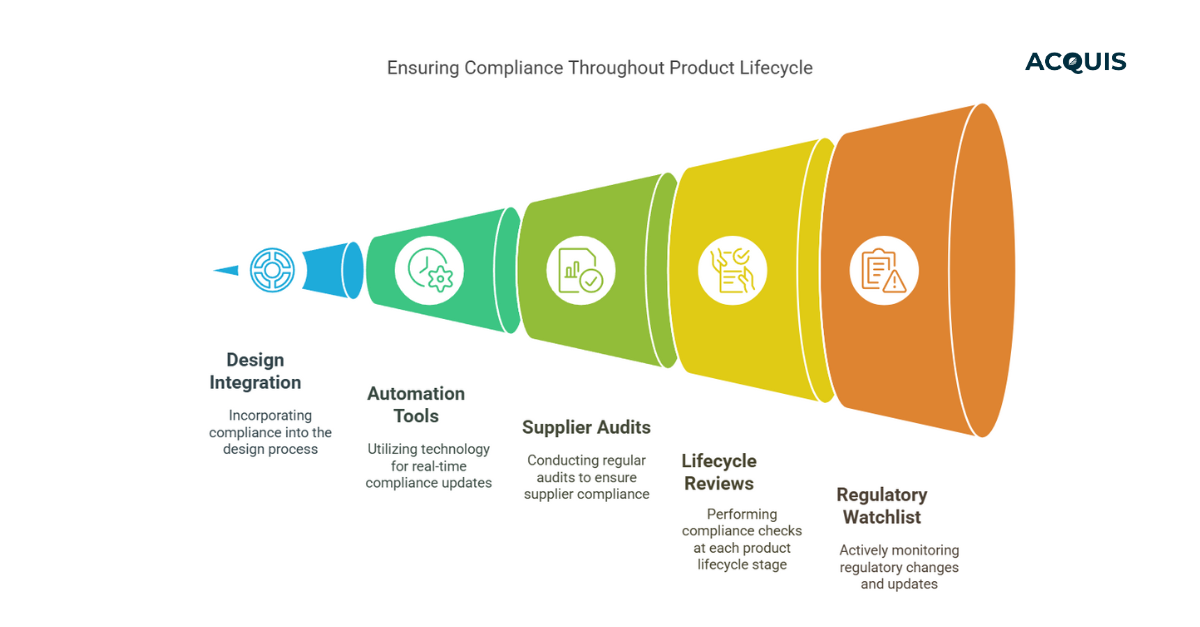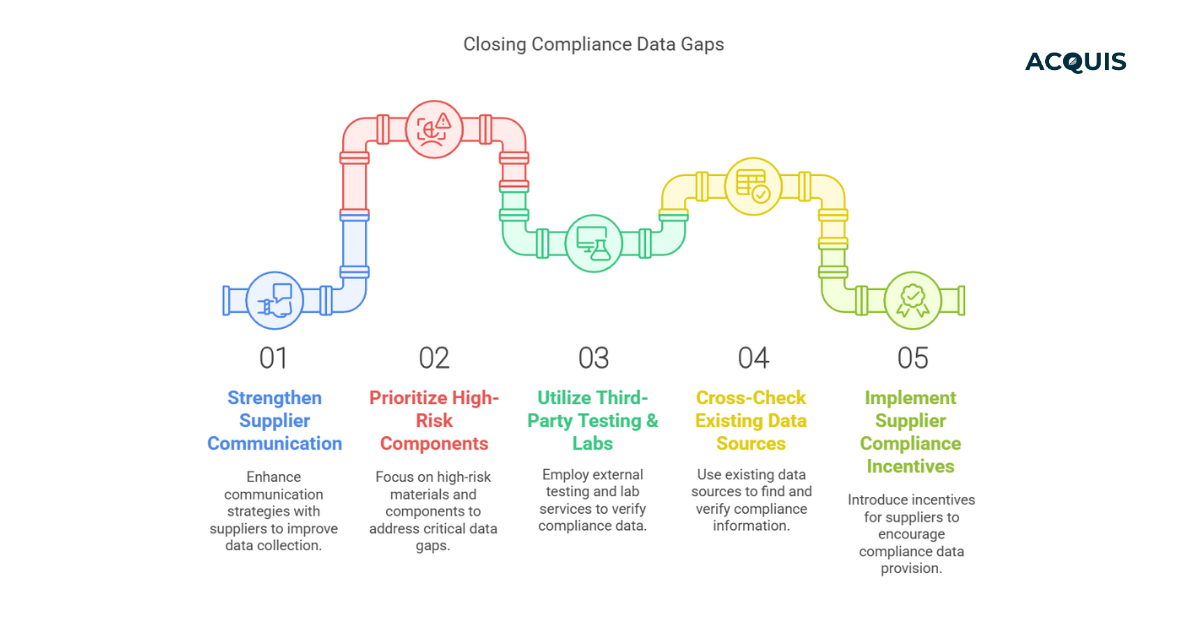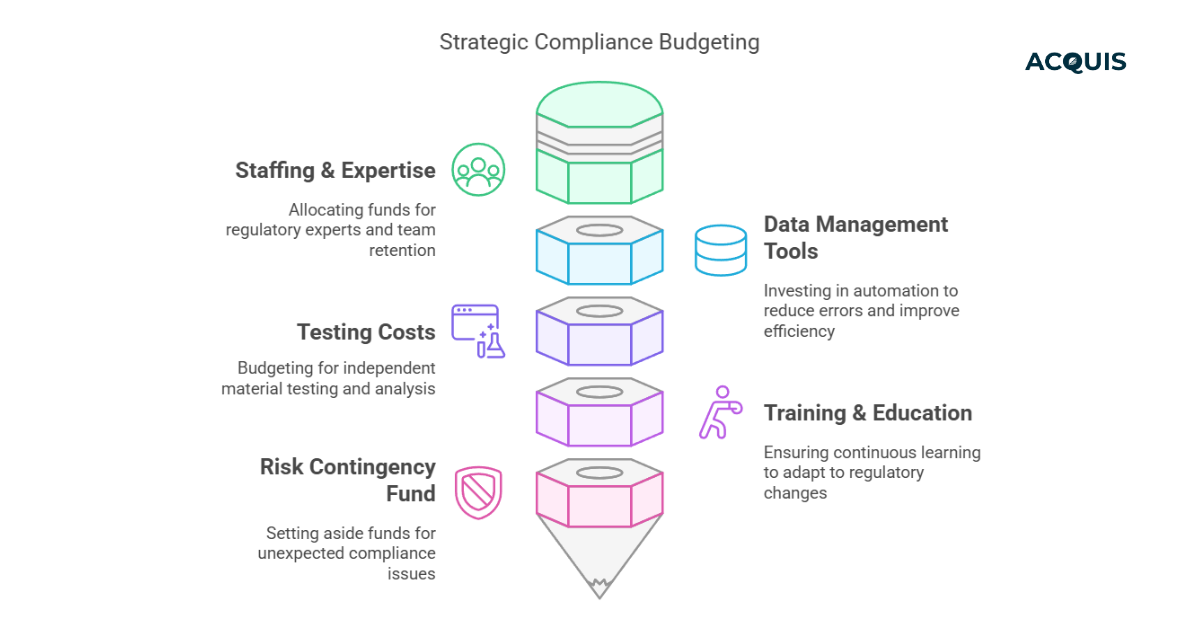Table of Contents
The Toxics in Packaging Clearinghouse (TPCH) is critical in monitoring and enabling the implementation of the Model Toxics in Packaging Legislation across its member states. This legislation, originally proposed by the Source Reduction Council of the Coalition of Northeast Governors (CONEG) in 1989, is intended to reduce the presence of heavy metals in packaging materials transported nationally.
In short, the TPCH is an organization dedicated to managing and improving the implementation of the United States' Toxics in Packaging Legislation. The primary goal is to reduce the concentration of the designated heavy metals—lead, mercury, cadmium, and hexavalent chromium—in packaging materials used or sold in specific U.S. states. This program attempts to reduce the environmental impact of these heavy metals throughout the packaging materials' life cycle, which includes manufacturing, distribution, and disposal.
Responsibilities Under the Comprehensive Toxics in Packaging Act
Responsibility for compliance with packaging regulations can vary by location and the specific regulations in place. In many cases, multiple parties along the supply chain share responsibility to ensure compliance. However, the specifics may differ based on regional or national laws.
To elaborate on the typical breakdown of responsibilities:
Manufacturers of Packaging and Packaging Components:
- These are the companies that produce the actual packaging materials, such as bottles, containers, boxes, etc. They are responsible for ensuring that their packaging complies with relevant regulations regarding materials, labeling, and other requirements.
Suppliers of Packaging and Packaging Components:
- Suppliers in the supply chain, who provide packaging materials to manufacturers or distributors, may also have responsibilities related to compliance. They need to ensure that the materials they supply meet regulatory standards.
Product Manufacturers or Distributors Using Packaging:
- Companies that use packaging for their products, such as placing goods in boxes or containers, are responsible for compliance as well. This includes adherence to regulations related to the types of materials used, recycling symbols, and any other relevant requirements.
Local Regulations (In This Case, Iowa):
- The specific regulations and the allocation of responsibilities may be defined by local or state authorities. In the case of Iowa, manufacturers and distributors are explicitly mentioned as being responsible for compliance
The Genesis of TPCH: Model Toxics in Packaging Legislation
The Comprehensive Toxics in Packaging Act finds its roots in the Model Toxics in Packaging Legislation developed by the Coalition of Northeast Governors (CONEG) in 1989. The primary aim was to curb the introduction of heavy metals—lead, mercury, cadmium, and hexavalent chromium—into the waste stream through packaging materials. Recognizing the pivotal role packaging plays in the waste stream, the act was crafted to reduce environmental hazards and promote sustainable waste management practices.
Toxics in Packaging Clearinghouse (TPCH): A Catalyst for Consistency:
To ensure consistent implementation of the Model Legislation across states, the Toxics in Packaging Clearinghouse (TPCH) was established in 1992. TPCH actively maintains the Model Legislation and serves as a resource hub for companies seeking information on toxics in packaging requirements or exemptions. Although initially affiliated with CONEG, TPCH is no longer tied to the Northeast-based organization due to the widespread adoption of the Model Legislation nationally.
State Adoption and Membership: A Growing Commitment:
Currently, the Model Legislation has been adopted by nineteen U.S. states, including California, New York, and Washington. TPCH's membership structure includes states-only voting members and an industry/public interest advisory group. The organization, based at the Northeast Waste Management Officials’ Association (NEWMOA) in Boston, Massachusetts, manages administrative functions on behalf of member states.
Original 1989 Model Legislation of TPCH :
The inception of the Model Toxics in Packaging Legislation in 1989 marked a significant step toward reducing the prevalence of four heavy metals in packaging materials distributed across various states. This legislative framework aimed to regulate the sale or distribution of packaging components containing lead, mercury, cadmium, and hexavalent chromium. Notably, the impact of this Model Legislation transcended national boundaries, influencing packaging requirements in the European Union, where it serves as the basis for their regulations under Directive 94/62/EC. Currently, nineteen states, including prominent TPCH members such as California, Connecticut, and New York, have adopted legislation aligned with this original model.
2021 Model Legislation Update:
In response to evolving environmental concerns, the Model Toxics in Packaging Legislation underwent a significant update in 2021. The revised model introduced regulatory measures for perfluoroalkyl and polyfluoroalkyl substances (PFAS) and ortho-phthalates as additional regulated chemicals. Furthermore, it incorporated new processes and criteria for the identification and regulation of other chemicals of high concern in packaging. While this updated model represents a comprehensive approach to address emerging challenges, as of the latest information available, no state has fully incorporated the entirety of the 2021 model legislation into its existing toxics in packaging laws. Some states, however, have selectively adopted elements of the updated model, reflecting an ongoing process of legislative adaptation to address contemporary environmental issues in the realm of packaging materials.
Incidental Presence Concentration Limits of TPCH :
In adherence to the 19 original toxics in packaging laws, intentional introduction of any quantity of the four metals is strictly prohibited. The cumulative concentration levels of incidentally introduced lead, mercury, cadmium, and hexavalent chromium in any package or individual packaging component must not surpass 100 parts per million by weight to ensure compliance. This restriction aims to minimize the unintentional presence of these heavy metals, promoting environmentally responsible packaging practices and mitigating their potential impact on the ecosystem.
How to Comply with Toxics in Packaging Clearinghouse (TPCH)?
To ensure compliance with the toxics in packaging laws, the following steps should be taken by manufacturers, suppliers, distributors, and purchasers: Certificate of Compliance Submission:
- The manufacturer, supplier, and distributor must submit a certificate of compliance stating that a package or packaging component adheres to the requirements of the law. Record Keeping:
- The purchaser, manufacturer, supplier, and distributor are responsible for retaining a copy of the signed certificate of compliance for as long as the respective package is in use.
- This record-keeping requirement does not extend to individual retail purchasers. Certificate of Compliance Availability:
- The certificate of compliance should be made available for state and public review upon request. This ensures transparency and accountability in demonstrating adherence to regulatory standards. Sample Certificate of Compliance:
- TPCH provides a sample certificate of compliance for reference and use. This sample is accessible on the TPCH website.
- Manufacturers, suppliers, and distributors can use this sample as a template to create their own certificates, ensuring consistency in compliance documentation.
Update on TPCH Exemptions :
As of August 2022, the Toxics in Packaging Clearinghouse (TPCH) outlines specific exemptions related to the intentional use of the restricted metals—cadmium, lead, mercury, and hexavalent chromium—in packaging.
Here is a summary of the exemptions and relevant details:
Broad Exemptions of TPCH :
The only broad exemptions pertain to packages meeting either of the following criteria:
- The use of the metal(s) is necessary to comply with state or federal health or safety requirements.
- There is no feasible alternative to using the metal(s) for the protection, safe handling, or function of the package's contents, excluding marketing functions.
Application Process for Exemptions: Manufacturers seeking exemptions must apply to the respective state and provide documentation demonstrating that the exemption criteria are met.
- Exemptions granted by states are subject to renewal upon reapplication every two years.
- Active Exemption for Post-Consumer Recycled Content:
- New Hampshire is the only TPCH member state with an active exemption for the four heavy metals (excluding PFAS and ortho-phthalates) due to post-consumer recycled content.
- New Hampshire has a higher limit of 200 parts per million (ppm) for the total concentration of the four metals in post-consumer content. No specific request/approval process is outlined, and interested parties are advised to contact the state of New Hampshire for more details.
Other Member and Non-Member States:
- All other member and non-member states maintain a limit of 100 ppm for the total concentration of the four metals in post-consumer recycled content.
Note on PFAS in Food Packaging:
- The information provided does not cover state laws addressing or governing perfluoroalkyl and polyfluoroalkyl substances (PFAS) in food packaging.
Concentration Limits and Intentional Use Exceptions in TPCH Packaging Laws
Regulations for post-consumer recycled content set specific concentration limits for regulated metals. While most states adhere to a limit of 100 ppm, New Hampshire stands out with a limit of 200 ppm. Additionally, New Hampshire and Connecticut permit the intentional use of regulated metals for vitrified labels or decorations, acknowledging unique considerations for certain applications
Conclusion: The TPCH's commitment to safer packaging through legislative oversight and industry collaboration underscores its importance in promoting sustainable and environmentally responsible practices. As the landscape evolves, the organization continues to adapt, ensuring the reduction of harmful substances in packaging materials nationwide.



